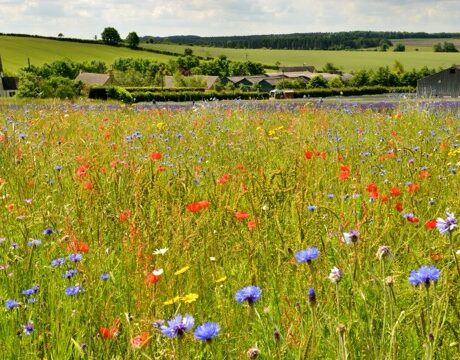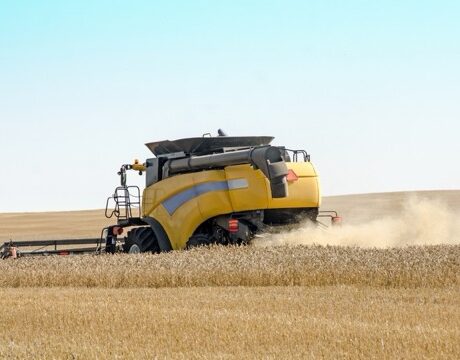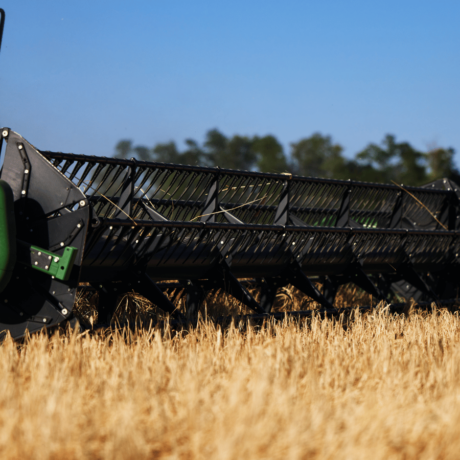Agronomy Update – Autumn 2021
Jock Willmott
Oct, 14 2021We have four potential days of fieldwork left before the rain resumes, with the now familiar anxiety about getting back on the land to finish off this seasons winter drilling. A straw poll of the Ceres Team would suggest c.90% of the anticipated winter drilling will be complete by the time the rain starts. We hope there will be further opportunity as October progresses to get wheat drilled after sugar beet, the last of the winter beans sown and the grassy cereal fields that have been deliberately left to the end, established.
Pre & Post Emergence Herbicide Applications – Crop Safety is key
The recent rush to beat the weather has, in some cases, compromised seedbed quality as corners are cut to get the acres in. Pendimethalin and Avadex are by far the most damaging to seedlings with insufficient soil coverage. If in any doubt about seed exposure, leaving pendimethalin and Avadex out of the pre-emergence stack will minimise seed vulnerability. Liberator and Defy type products are generally less harmful, especially when applying with the risk of unknown rainfall quantities, in the short-term forecast.
It goes without saying, cutting the dose and number of active ingredients in the pre-em stack will reduce blackgrass control, so it is important to consider a peri or post-emergence application. Once emerged, the shallow seed is at less susceptible to chemical damage, and another herbicide can be applied. To maximise grass weed control from residual herbicides, application prior to weed emergence is essential. This poses difficulty, given the reliance on peri/post emergence applications, where spraying opportunities in October and November are limited. Once the blackgrass has emerged the battle is as good as lost, with higher rates of residual herbicides required, and/or a contact SU required, which again compromises crop safety.
Particular care should be taken with late planted winter barley. Delayed seed delivery has, in some cases, suspended drilling by as much as three weeks. Winter barley requires temperature to tiller and slowing growth resulting from a heavy pre-emergence stack on compromised seedbeds eats into the October growing window. As the crop recovers from the pre-em, soil temperatures are already declining, generally the soil is getting wetter, and growth slows further threatening the all-important tiller/ear numbers. Cereals on chalk behave in a similar fashion, with some rolled crops facing heavy rainfall previously becoming tight/capped and slow to emerge. Again, some empathy is required when timing and selecting follow up herbicide treatments.
Rolling the crop requires a judgment call between pending rainfall, seedbed quality and soil moisture content below drill depth. In these conditions, it may be advisable to avoid rolling, whereas an application of slug pellets may be required.
Aphid Control
As an industry, we recognise the 170-day degree threshold and, wherever possible, adhere to the advice given from various apps. In general, September emerging wheat and barley are at the point of spraying, however, the difficulty arises when spray windows are limited, and timings may not correspond to thresholds being reached. In these scenarios, where aphids are being found but not yet at the required temperature duration to trigger treatment, a judgement call must be made. It is likely best to treat with an insecticide in with the post emergence herbicide, although it may be slightly too early, this eradicates the risk of being unable to treat the issue post threshold.
Applications of insecticides made in mid-October, to a late September drilled crop, are unlikely (fingers crossed), to require a second autumn insecticide unless in the south of the country, or where the winter is unseasonably mild.
Oilseed Rape
Across the region it appears rape drilling rates are higher, however rape failure rates have also increased, when compared to last year.
There are some amazing looking full crops this year, which is promising to see, and these crops deserve a full fungicide and trace element treatment this autumn, to prepare them for winter. One notable correlation from the annual Ceres Rural yield data is that when the price of rape increases, yield rates follow, suggesting growers are willing to devote more towards crop protection when the price supports investment. Most of this yield response will come from spring fungicide applications but the foundations are built in the autumn, with robust weed and disease control.
Following the localised heavy rains, some crops are showing early yellowing and purpling, as nitrogen levels are reduced, and the shallow roots are unable to scavenge for sufficient nutrition to meet demand. There is little that can be done to salvage these crops, particularly where autumn nitrogen applications have already taken place. The fear is that stunted growth will diminish plant tolerance to larvae pressure when frosts commence.
Winter Beans
September planted crops are emerging while others are still waiting for the seed deliveries. Where possible, pay attention to the seed thousand grain weight and adjust seed rate accordingly, based on drilling dates, variety and TGW. Senova’s Winter Bean Growing Guide 5th Edition is available on their website and offers valuable insight, as does PGRO, which is also featured on Senova’s website.
Propyzamide availability remains an issue, but I remain hopeful of timely delivery, to allow for scheduled application. Where propyzamide is unavailable, there are available supplies of Crawler (Carbetamide), as the only residual treatment available after pendimethalin and prosulfocarb ( Anthem & Defy) for grass weed control.
Nitrogen 2022
Early purchasers with supplies of nitrogen are likely feeling very smug, however, those with purchased product yet to be delivered face an uneasy wait. The vast number of late-purchased nitrogen orders has become apparent recently, with October prices for Nov – Jan nitrogen delivery currently between £1.20 – 1.50/kg Nitrogen- the highest many will have seen in their farming careers. The burning question remains: should farmers take cover at these prices or not? The short answer when advising people is yes, however it can be a different call when it’s your own business. There are far too many factors to consider making an educated prediction on future prices and farm delivery dates. We can only take decisions with the information provided at the time and with so much uncertainty, possession of the fertiliser must be key.
Calls regarding cropping changes or swapping feed wheat for milling wheat have been limited, however, understandably, calls regarding reducing nitrogen application rates by c.20-40kg/ha are becoming the norm. Amongst our clients, there doesn’t appear to be a noticeable switch to increased oats or beans to reduce overall nitrogen requirement, although local grain merchants are having these discussions with a limited number of growers.
Clearly nitrogen prices will go down, but the concern presently is that this may not occur until the new season pricing takes over in May/June 2022. If I were a betting man, I would think by April the price should be lower than pre-Christmas, but who knows? Mercifully, forward grain prices are good and there is the opportunity to soften increased nitrogen purchases with increased grain sales, especially if 50%+ of the cereal acreage is already planted and in good condition. Let’s hope this is not a sign of potential volatility to come!
Spring Chemical Supply
The glyphosate saga underlines the importance of having good communication and a strong relationship with suppliers. Glyphosate is trickling out onto farm just in time, which suggests distributors are being restocked, but there does not appear to be an end to the manufacturing issue in the short term. Best advice is to keep speaking to your distributor or buying group, and order your spring requirement on farm via a number of sources.
At present we are not hearing of any spring chemical shortages…. but the situation remains dynamic and can change quickly. Therefore, having a stock of the key essentials on farm come the springtime must make business sense.
Action Points
- Accurately prioritise follow up peri/post emergence herbicide treatments, taking into consideration concessions made pre-emergence and crop vulnerability.
- Send spring seed off for testing – be aware some spring bean germinations dropped last year between Autumn and Spring testing.
- Keep an eye on grain moistures in store.
- Ergot – what can you do about it on your farm? e.g. Did spring rolling make it worse?
- Make enquires about essential spring ag chem.






